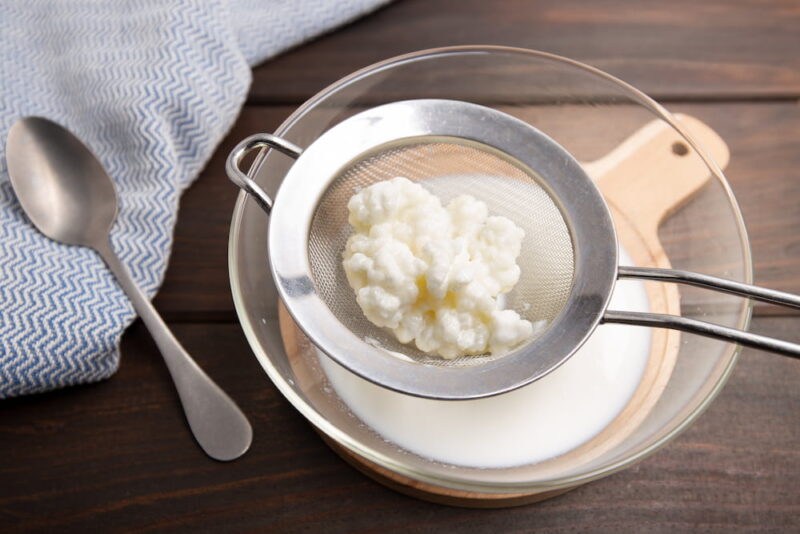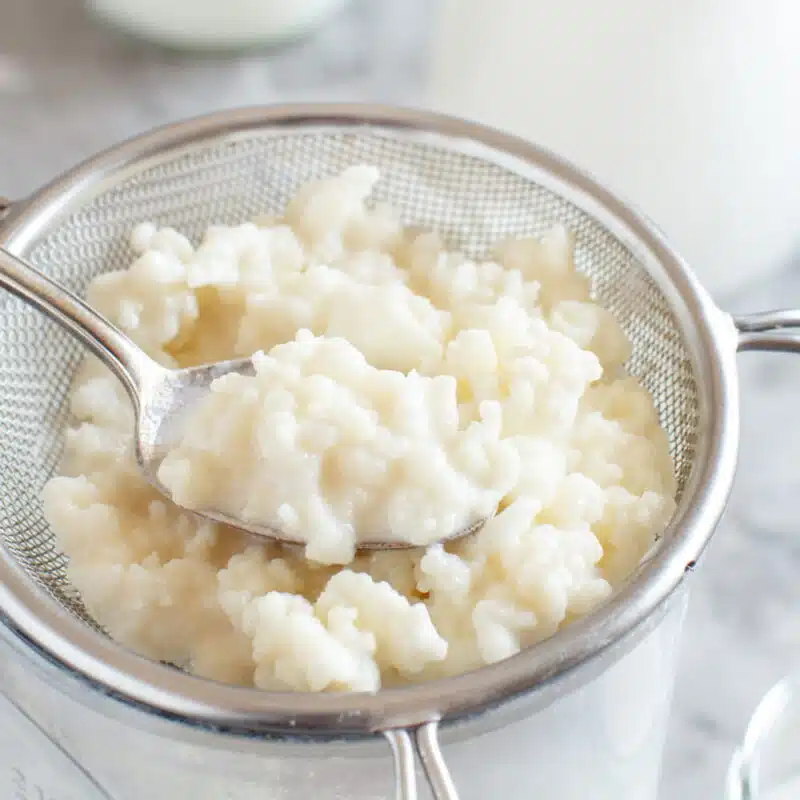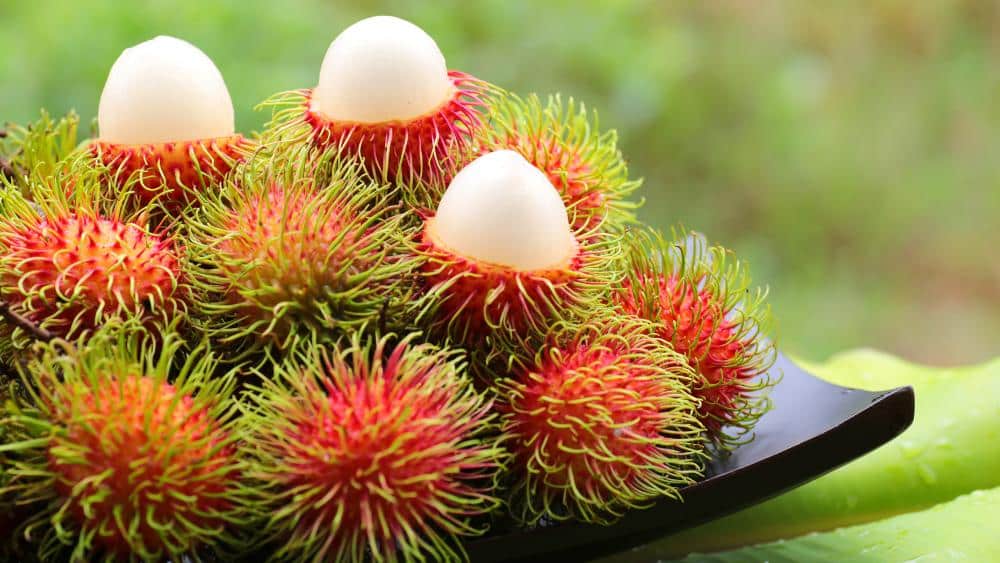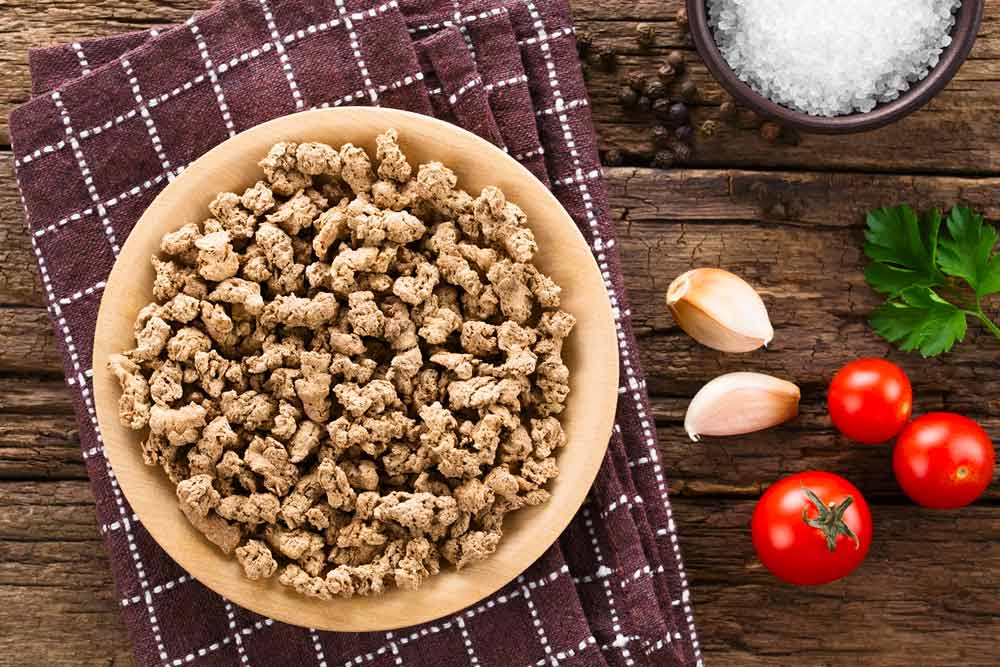Hello everyone! Today at Paulina Cocina, we're going to talk about a recipe that's as old as it is curious, yet delicious: Milk Bulgarians . If you have no idea what they are, that's normal if you don't live in Eastern Europe or Russia , but don't worry, because here we'll go over all the details.
These small white balls (which sometimes resemble miniature cauliflower) have been used for centuries in many cultures to improve digestive health , strengthen the immune system and, of course, to enjoy a delicious and creamy kefir.
But where do milk Bulgarians come from? And how are they made at home? Let's discover all this and more.
Content table
About the Milk Bulgarians
Bulgarian milk, also known as kefir, is basically a colony of bacteria and yeast used to ferment milk and turn it into a probiotic drink packed with health benefits.
The history of milk bulgarians is as rich and complex as kefir itself. Its origins date back to the Caucasus Mountains , a region between Eastern Europe and Western Asia , where nomadic tribes carried milk in leather sacks that fermented naturally thanks to these tiny organisms.
- Fermentation not only preserved the milk, but also created a probiotic-rich drink, ideal for improving health during times of low temperatures.
Milk kefir was a well-kept secret for centuries until it gradually spread to other parts of the world. Today , milk kefir has become a popular beverage around the world , especially among those interested in healthy, natural eating.
What are Milk Bulgarians used for?
Bulgarian milk is primarily used to make kefir, making it an extremely versatile ingredient in cooking. With a slightly sour flavor and creamy texture, it's an ideal ingredient for a variety of preparations .
For example, in the preparation of sweet recipes or pastries, kefir is used instead of yogurt or buttermilk to add fluffiness to breads, muffins, and cakes. Furthermore, its leavening properties can improve the texture and flavor of your favorite recipes.
Some ideas on how to use kefir in the kitchen:
- Shakes and smoothies: Combine with fruit, honey, or oatmeal for a quick and nutritious breakfast.
- Dressings and sauces: Mix kefir with herbs, spices, and lemon for a healthy dressing.
- Desserts: Use it in cakes, homemade ice cream, or to make a light mousse.
- Bakery: Substitute it for buttermilk or yogurt in bread, muffin, and cake recipes.
- Cold soups: Add it to soups like gazpacho for a creamier, probiotic-rich version.
With so many ways to incorporate it into your meals, kefir is an ingredient that not only provides flavor, but also benefits your well-being.
Ingredients for making homemade Bulgarian Milk Kefir
Making milk Bulgarians at home is surprisingly simple and requires only a few basic ingredients. Here's what you'll need:
- Milk Bulgarians : If you don't have them yet, you can get them at health food stores or online. Sometimes, you can even get some from someone who already has them, as they tend to multiply.
- Milk : You can use any type of milk (whole, semi-skimmed, skimmed, goat, etc.), but it's best to avoid ultra-pasteurized milk, as it can affect fermentation.
- A glass jar : To ferment the milk.
- A plastic strainer : To strain the bulgarians once the milk has fermented.
Some characteristics of the taste and texture of Milk Bulgarians
You're probably wondering how good a fermented milk drink can really taste, but it's not as bad as it sounds. Milk bulgarians have a fresh, slightly sour flavor, similar to yogurt, but with a more pronounced acidity due to the fermentation. This acidity can vary depending on the fermentation time, being milder if fermented for a shorter time and stronger if left for a longer time.
- Texture: It's a thinner drink than yogurt, with a slight fizz that occurs during fermentation. This gives it a bubbly sensation in the mouth.
- Aroma: May have a distinctive lactic aroma, sometimes with a hint of yeast due to fermentation.
The taste of this drink can be determined by the combinations you make; some people love its refreshing flavor and enjoy it alone or mixed with fruit and honey , while others may find it too sour or unusual if they are not used to fermented products.
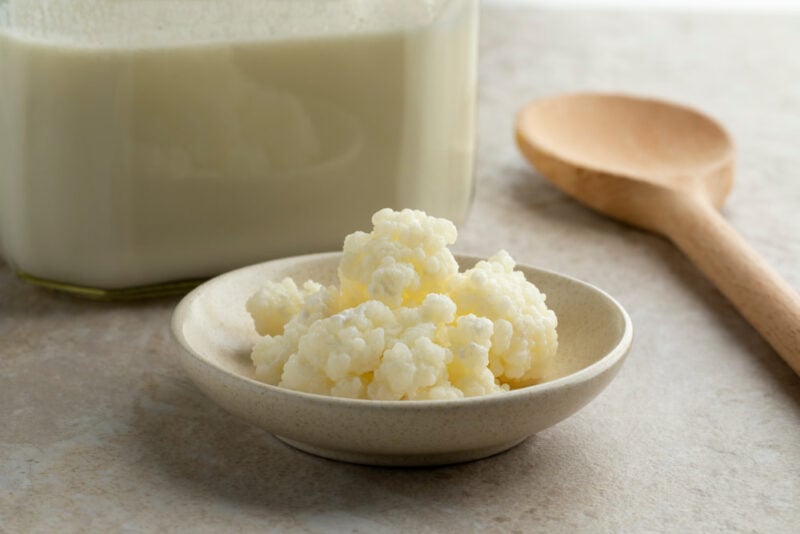
Homemade Cooking with Milk Bulgarians: 5 Tips
Milk Bulgarian yogurt is a probiotic food that's easy to make at home if you follow a few essential tips. Here are five key tips for getting the best results.
- Use non-metallic utensils: Avoid contact with metal, as this can damage the Bulgarians. Always use plastic, wooden, or silicone spoons and strainers.
- Maintain the proper temperature: Milk Bulgarians ferment best between 20 and 24°C. If your kitchen is cold, wrap the jar in a towel or place it near a gentle heat source.
- Adjust the fermentation time: For a milder result, ferment the milk for 12 to 24 hours. If you prefer a stronger, more acidic flavor, leave it for up to 36 hours.
- Try different types of milk: In addition to cow's milk, experiment with goat's milk, sheep's milk, or even plant-based milks. Keep in mind that plant-based milks may need a sugar supplement for proper fermentation.
- Give your Bulgarians a rest: If you don't use them immediately, store them in the refrigerator with fresh milk. This allows them to recover and prolongs their shelf life.
How to know how much a recipe for milk bulgarians yields
The amount of milk bulgarian you can obtain from a liter of milk depends on several factors , such as the initial concentration of the bulgarian and the fermentation time. Generally speaking, bulgarian tends to multiply during the fermentation process , but not in large quantities quickly.
- From one liter of raw milk, you could start with about a tablespoon of bulgarian acid (equivalent to about 10-15 grams). After 24 to 48 hours of fermentation, you may see a slight increase in the amount of bulgarian acid, perhaps 10-20% more by volume, depending on ambient conditions and the freshness of the milk.
This growth process is gradual , so increasing the number of bulgarians is something you will notice more over time if you continue to make kefir regularly and provide them with a favorable environment.
Remember that dairy Bulgarians need to be constantly “fed” with new milk to continue growing and multiplying.
The basic process for preparing milk kefir
You will need 1 liter of milk and 2-3 tablespoons of milk bulgarians.
- Preparation: Place the Bulgarians in a glass jar and pour the milk over them.
- Fermentation: Cover the jar with a clean cloth and let it ferment at room temperature for 24-48 hours, depending on the desired acidity.
- Straining: Once the milk has thickened, strain the kefir to separate the grains.
- Reuse: Bulgarians can be reused to make more kefir or stored in a little milk in the refrigerator.
How do you know if Milk Bulgarians are no longer good?
Milk Bulgarians can last a long time if properly cared for, but they may reach a point where they are no longer effective at fermenting milk . Here are some signs that your Bulgarians may not be serving you well:
- Color Change: The resulting drink should be white or slightly yellowish. If you notice a change in color to brown, gray, or pink, this is a sign that it may be contaminated and should not be used.
- Unpleasant odor: Fermented Bulgarian beer has a distinctive, slightly sour smell, but it's not a very strong or unpleasant smell, and it's certainly not rotten. If you notice this, it's likely that the Bulgarian beer is spoiled.
- Loss of texture: Bulgarian bread should have a firm, gelatinous texture. If it becomes soft, crumbly, or slimy, it may no longer be at its best.
- They don't ferment the milk: If you notice that after 24-48 hours the milk isn't fermenting, meaning it doesn't become thick or sour as it normally would, your Bulgarians may have lost their fermentation ability.
How long can Bulgarians in milk be stored?
You can leave the bulgarians in their milk for about 2-3 days at room temperature to ferment, but if you leave them in the refrigerator, they can be stored in the milk for a week or even a little longer, although the fermentation process will be much slower.
Some tips before making milk bulgarians
- Regular milk changes: To keep Bulgarians healthy, it is ideal to change the milk every 24-48 hours when it is at room temperature.
If you need to store them longer, you can do so in the refrigerator, but be sure to change the milk every 5-7 days.
- Storing in water: If you need to store the bulgarians for a longer period, you can store them in water with a little sugar in the refrigerator, although this is less ideal than keeping them in milk.
Follow on Instagram ( here )
and on YouTube that I upload new videos every week ( click here )
